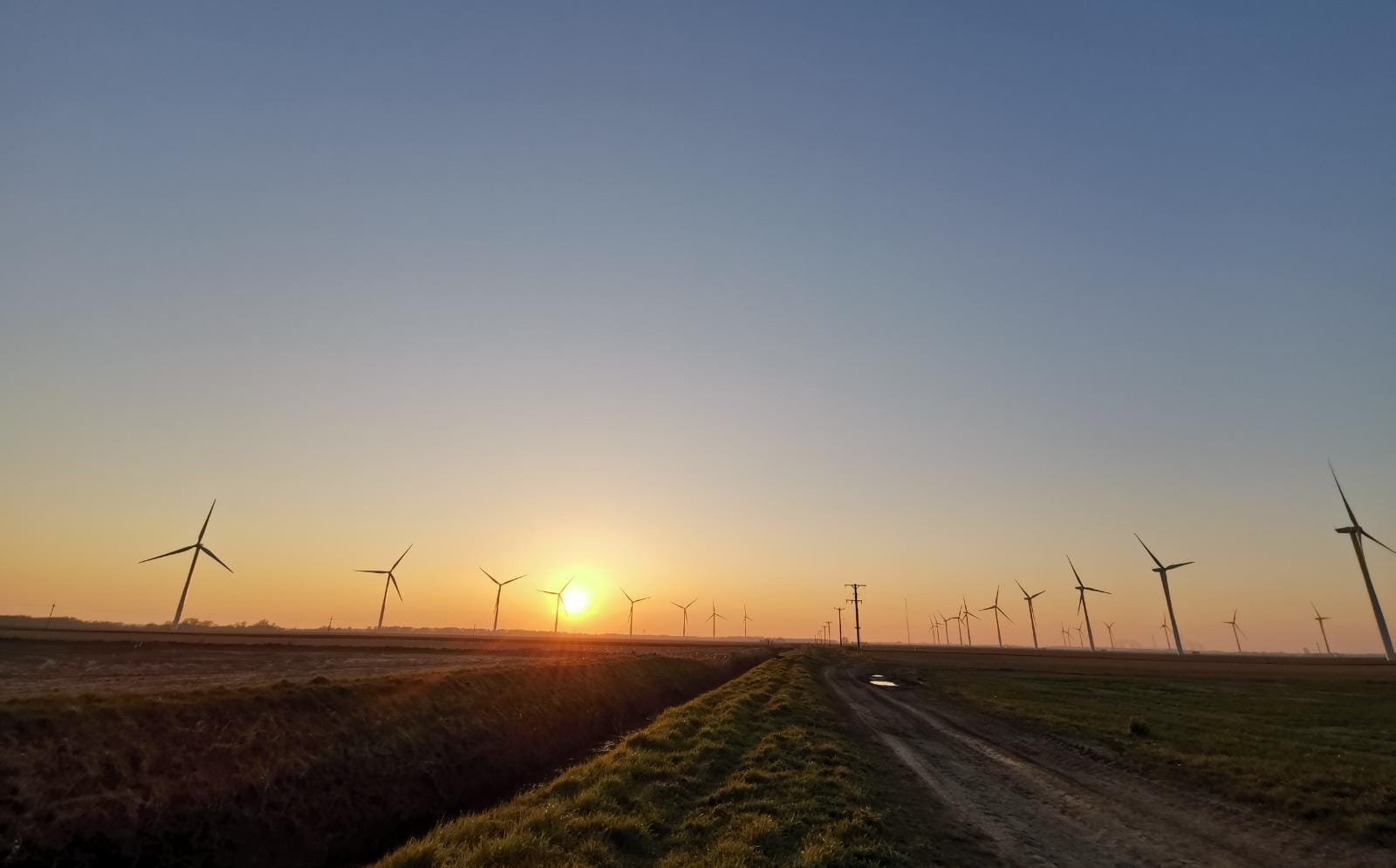
Marsh Harriers and wind farms.
Goole Fields wind farm
RED HOUSE FARM WIND FARM
We have been involved in the post-construction monitoring of two wind farms that are regularly used by marsh harriers, Red House Farm in north-west Norfolk and Goole Fields (and its extension) in East Yorkshire.
The potential effects of wind turbines on marsh harriers, include potential displacement from foraging areas and nest sites, a barrier effect disrupting flight lines and collision risk. These studies collectively highlight how marsh harriers interact with the wind farm environment.
DISPLACEMENT OF FLIGHT ACTIVITY
The studies conducted at both wind farms suggest that marsh harriers experience a degree of displacement due to the presence of turbines. The harriers were largely displaced from the 100 m zone around the wind turbines and there was a substantial reduction within 200 m.
At Red House Farm, marsh harrier use of the zone within 100 m of the wind turbines was 88% lower, and the use of the 100-200 m zone 73% less than during the pre-construction surveys. Beyond 200 m there was no evidence of any displacement.
At Goole Fields, marsh harrier use of the area within 50 m of the turbines was 55% lower and 15% lower in the 50-100 m zone, but no effect was apparent beyond 100 m. In contrast, during the winter period, there was reduced use of a wider zone, up to 400 m from the turbines.
Disturbance and breeding activity
Both wind farm sites were located outside areas/habitats used by nesting marsh harriers - there were no nests within 1 km of any turbine at either site during the baseline surveys. However, a pair did nest within this zone in the third year of post-construction monitoring at Red House Farm, and at Goole Fields the local marsh harrier population - though not breeding within the wind farm site itself - increased from zero in the 2001 and 2007 baseline surveys to 8-9 pairs in 2017 and 7 pairs in 2019. There was no evidence at either site that the local marsh harrier population had been adversely affected by the wind farm.
Collision risk
Industry-standard collison modelling (Band et al. 2007) predicted a collison risk of almost 1 harrier per year at Red House Farm and 0.4 at Goole Fields, so a comprehensive programme of carcass searching was undertaken (for 3 breeding seasons at Red House Farm and 5 full years at Goole Fields), including checks for scavenger removal and search efficiency.
Observations of harriers during post-construction vantage point surveys showed that marsh harrier flight activity within the potential collision risk zone at rotor height averaged 81% less than that recorded prior to construction. The collision modelling substantially over-estimated the actual collision risk to this species. No marsh harrier collisions at all were recorded at either site



